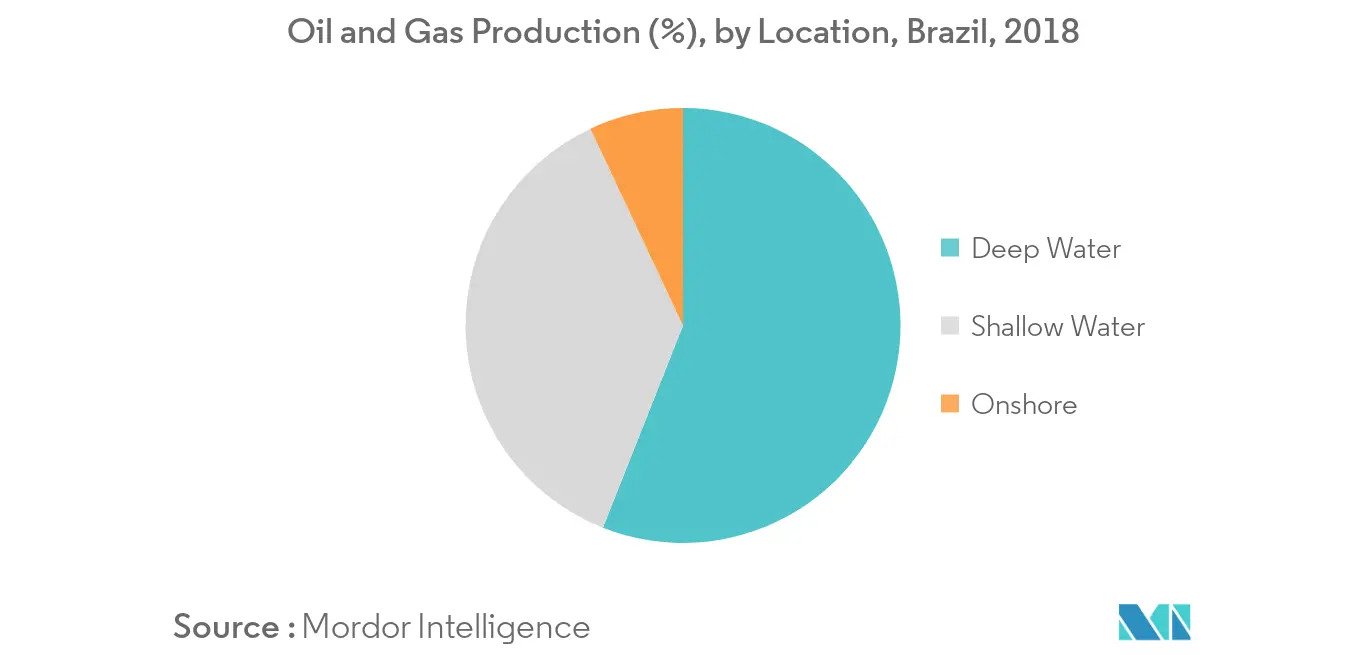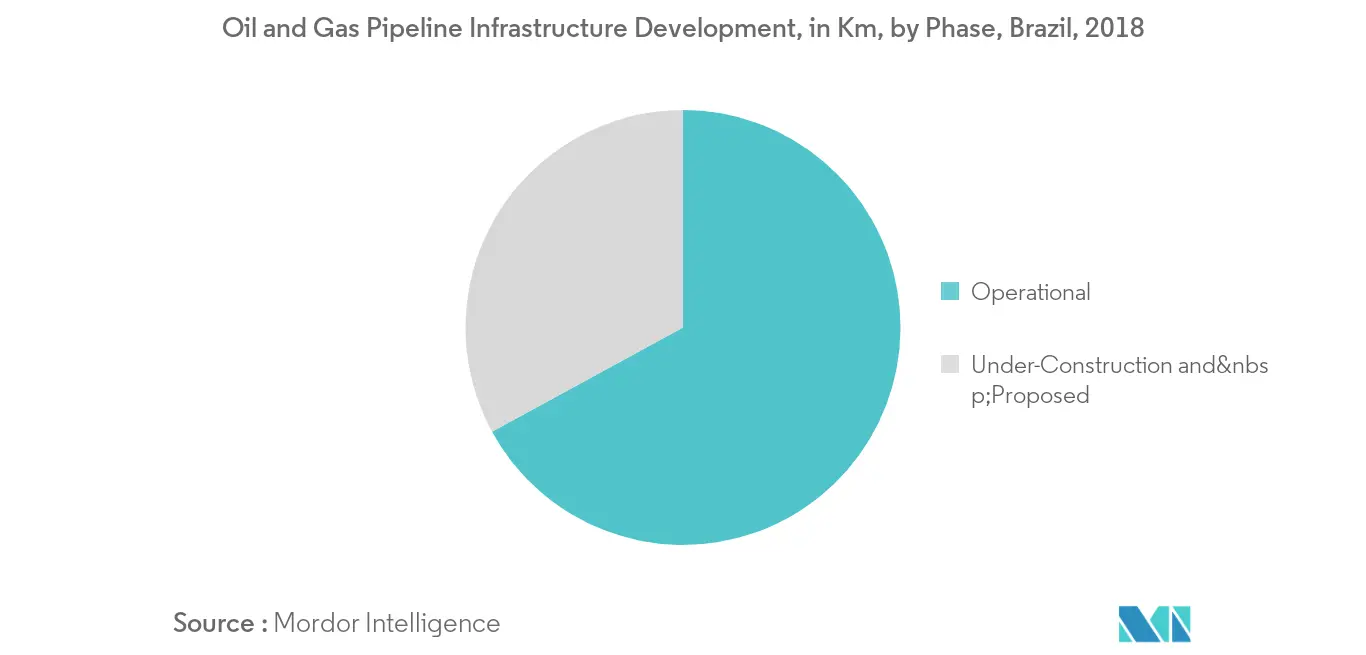Market Trends of Brazil Oil and Gas Industry
This section covers the major market trends shaping the Brazil Oil & Gas Market according to our research experts:
Upstream Sector as a Significant Market
- As of 2018, Brazil was the 10th largest producer of oil and gas in the world, the largest producer in South America and the 7th largest oil products consumer in the world. Almost 80-90% of oil and gas produced in Brazil are from the offshore.
- Brazil's deep-water projects are dominating the oil and gas upstream sector and are likely to dominate the market in the forecast period. For instance, in 2018 nearly 56% of the oil and gas production comes from deep-water, and around 37% comes from shallow water.
- During 2019, Petróleo Brasileiro S.A. (Petrobras) has awarded MODEC to install the fifth Floating, Production, and Storage Offshore (FPSO) Unit in Buzios field for its development. The FPSO is estimated to process 150,000 barrels of crude oil per day, 212 million standard cubic feet of gas per day, 240,000 barrels of water injection per day and will have a minimum storage capacity of 1,400,000 barrels of crude oil. The first oil production by the FPSO is planned for 2022.
- Libra oil field in Santos Basin in Brazil is an ultra-deep-water basin, and is the largest oil field in Brazil, which is under development phase, and is expected to come online in 2021. This is likely to have a positive impact on the brazil oil and gas upstream market in the forecast period.

Increasing Deep-Water Activities and Pipeline Infrastructure to Drive the Market
- Deep-Water projects in the past decade have dominated the upstream brazil oil and gas sector, and with growing development in the pre-salt region of the country, it is expected to drive the market during the forecast period.
- During 2018, Brazil has installed nearly 29 offshore rigs and 20 onshore rigs, with rising activities in the offshore region especially in Campos and Santos basin, the numbers of rigs and FPSO installation are expected to increase.
- Brazil's pipeline infrastructure holds a significant market share in the countries downstream sector. As of 2019, the country has nearly 3100 kilometers of the under-construction gas pipeline, which is expected to expand the pipeline infrastructure market during the forecasting period.
- There are nearly three major pipeline projects in the country, which include both capacity expansion pipeline and newly construct pipelines. Capacity expansion pipeline includes the Bolivia-Brazil pipeline (GASBOL), which is expected to increase its capacity to 3.6 million cubic meters by 2022. The new construction of the gas pipeline includes the gas pipeline between Argentina and Brazil, and Sao Carlos, Sao Paulo, and Brasilia.
- During 2018, Brazil has 84 developed fields that are majorly on onshore. The development of the fields is expected to install new oil and gas pipelines and thus is expected to boost the overall oil and gas market of the country in the near future.


